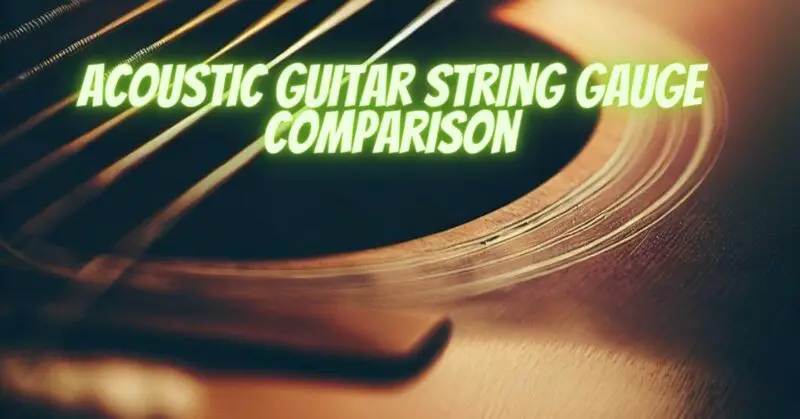The choice of string gauge for your acoustic guitar is a fundamental decision that profoundly affects the instrument’s playability and tone. Acoustic guitar string gauges vary from light to heavy, each offering a unique blend of characteristics that cater to different playing styles and musical genres. In this article, we’ll embark on a comparative journey, examining the attributes and considerations of various acoustic guitar string gauges to help you make an informed choice.
1. Light Gauge Strings (0.010-0.047)
- Playability: Light gauge strings offer ease of playability due to their lower tension. They are ideal for players who prefer effortless fretting, fingerpicking, and bending.
- Bright Tonal Profile: Light gauge strings produce a bright and articulate tone with crisp highs. They excel in genres like folk, country, and fingerstyle playing.
- Expressive Techniques: These strings facilitate expressive techniques such as vibrato, bends, and slides. Players seeking a balance between playability and tone gravitate toward light gauge strings.
2. Medium Gauge Strings (0.011-0.052)
- Balanced Tone: Medium gauge strings strike a balance between playability and tonal richness. They offer a versatile tonal profile that adapts well to different genres.
- Sustained Sound: The slightly higher tension of medium gauge strings contributes to enhanced sustain and a fuller sound, making them suitable for strumming and fingerstyle alike.
- Versatility: Medium gauge strings are favored by players who require a versatile sound that can handle both rhythm and lead playing across various musical genres.
3. Heavy Gauge Strings (0.012-0.056)
- Resonant Tone: Heavy gauge strings provide a rich and resonant tone with pronounced bass frequencies. They offer enhanced volume and projection, ideal for acoustic performances.
- Strong Sustain: The increased tension of heavy gauge strings contributes to extended sustain and a powerful sound. They excel in genres where a strong presence is crucial, such as bluegrass and rock.
- Fingerstyle and Flatpicking: Heavy gauge strings are favored by players who prioritize fingerstyle and flatpicking techniques, as their strong projection and full-bodied tone complement these playing styles.
4. Considerations for Choosing
- Playing Style: Your playing style greatly influences the ideal string gauge. Consider whether you favor fingerpicking, strumming, or a combination of both.
- Tonal Preferences: Your desired tonal character also plays a role. If you prefer brighter tones, light gauge strings may be suitable, while those seeking a richer, resonant sound might opt for heavier gauges.
- Genre Compatibility: Different musical genres have distinct tonal requirements. Light gauge strings are suited for genres like folk and pop, while heavy gauge strings excel in bluegrass and rock.
- Acoustic Guitar Type: The type of acoustic guitar you own—dreadnought, parlor, jumbo—can influence how different string gauges interact with its unique characteristics.
The choice of acoustic guitar string gauge is a personal decision that shapes your instrument’s voice and your musical journey. Each gauge offers a distinctive tonal palette, playability, and sonic character that cater to a variety of playing styles and preferences. By understanding the attributes of light, medium, and heavy gauge strings, you can select the gauge that aligns with your musical aspirations, enabling you to craft a sound that resonates deeply with your artistic expression.


